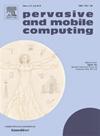Distributed fault detection in sparse wireless sensor networks utilizing simultaneous likelihood ratio statistics
IF 3.5
3区 计算机科学
Q2 COMPUTER SCIENCE, INFORMATION SYSTEMS
引用次数: 0
Abstract
Sensor nodes in wireless sensor networks (WSNs) for several remote applications are deployed in harsh environments and are coupled with low-cost components. Because of these factors, sensor nodes are becoming faulty, resulting in serious data inaccuracy in the network if not diagnosed in a timely manner. The current approaches to centralized or distributed fault detection algorithms are based on statistical methods or machine learning algorithms. Statistical methods require more data to achieve the desired detection accuracy and may be impractical for sparse networks. Machine learning approaches are computationally demanding. We know that the mean and variance of data from a faulty node differ from those from a healthy node. As a result, simultaneous likelihood ratio statistics are proposed here to determine the sensor node’s fault status in WSNs. The proposed hybrid method, in which the faulty status of the node connected to the anchor node is diagnosed by the anchor node, assumes that the anchor node has statistics for all connected nodes. During the diagnosis time, the simultaneous likelihood ratio statistics (SLRS) are computed using the data received by the anchor node over a specific time period. The fault status is determined by comparing the likelihood ratio to a predetermined threshold based on the tolerance limit. The algorithm’s performance is determined and compared to state-of-the-art algorithms using real-time measured data from the literature.
基于同时似然比统计的稀疏无线传感器网络分布式故障检测
用于多个远程应用的无线传感器网络(wsn)中的传感器节点部署在恶劣的环境中,并与低成本组件相结合。由于这些因素的影响,传感器节点出现故障,如果不及时诊断,会导致网络中数据严重不准确。目前的集中式或分布式故障检测算法是基于统计方法或机器学习算法。统计方法需要更多的数据来达到期望的检测精度,并且对于稀疏网络可能不切实际。机器学习方法的计算要求很高。我们知道来自故障节点的数据的均值和方差不同于来自健康节点的数据。因此,本文提出了同步似然比统计来确定wsn中传感器节点的故障状态。提出的混合方法假设锚节点具有所有连接节点的统计信息,即锚节点对连接到锚节点的节点的故障状态进行诊断。在诊断期间,使用锚节点在特定时间段内接收的数据计算同时似然比统计(SLRS)。通过将似然比与基于容限的预定阈值进行比较,确定故障状态。该算法的性能被确定,并与使用文献中实时测量数据的最先进算法进行比较。
本文章由计算机程序翻译,如有差异,请以英文原文为准。
求助全文
约1分钟内获得全文
求助全文
来源期刊

Pervasive and Mobile Computing
COMPUTER SCIENCE, INFORMATION SYSTEMS-TELECOMMUNICATIONS
CiteScore
7.70
自引率
2.30%
发文量
80
审稿时长
68 days
期刊介绍:
As envisioned by Mark Weiser as early as 1991, pervasive computing systems and services have truly become integral parts of our daily lives. Tremendous developments in a multitude of technologies ranging from personalized and embedded smart devices (e.g., smartphones, sensors, wearables, IoTs, etc.) to ubiquitous connectivity, via a variety of wireless mobile communications and cognitive networking infrastructures, to advanced computing techniques (including edge, fog and cloud) and user-friendly middleware services and platforms have significantly contributed to the unprecedented advances in pervasive and mobile computing. Cutting-edge applications and paradigms have evolved, such as cyber-physical systems and smart environments (e.g., smart city, smart energy, smart transportation, smart healthcare, etc.) that also involve human in the loop through social interactions and participatory and/or mobile crowd sensing, for example. The goal of pervasive computing systems is to improve human experience and quality of life, without explicit awareness of the underlying communications and computing technologies.
The Pervasive and Mobile Computing Journal (PMC) is a high-impact, peer-reviewed technical journal that publishes high-quality scientific articles spanning theory and practice, and covering all aspects of pervasive and mobile computing and systems.
 求助内容:
求助内容: 应助结果提醒方式:
应助结果提醒方式:


